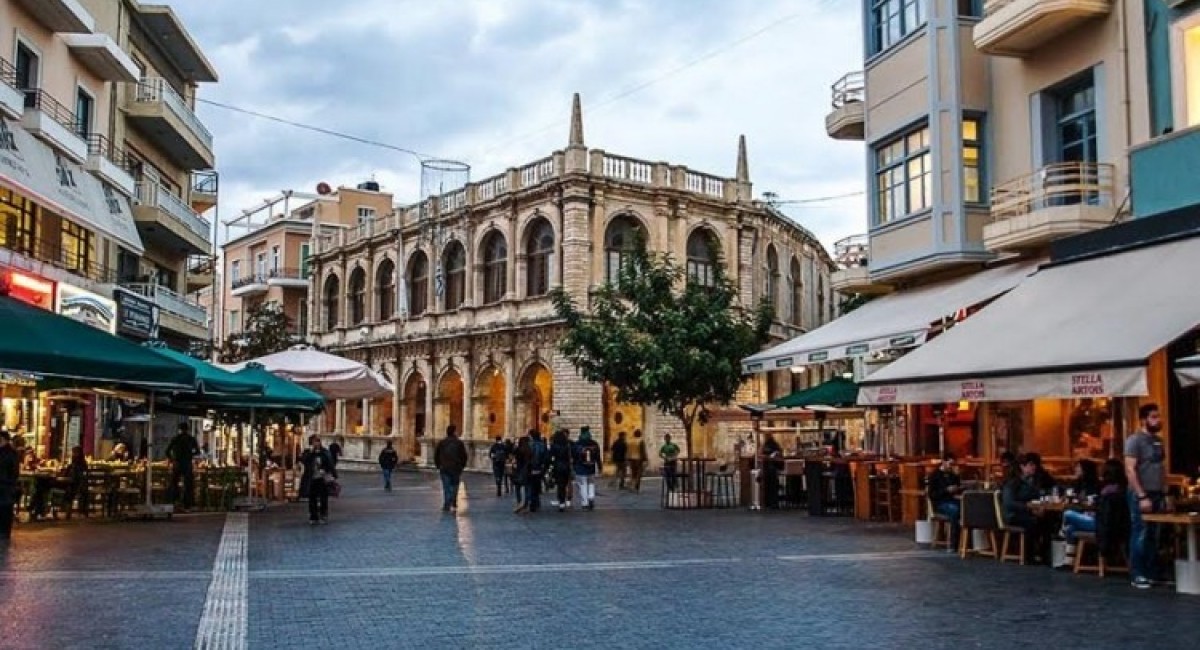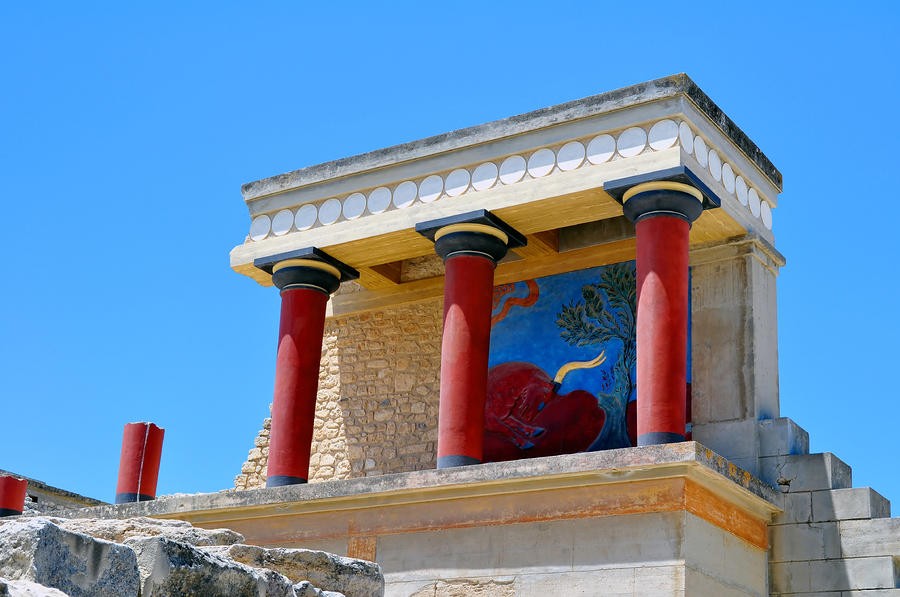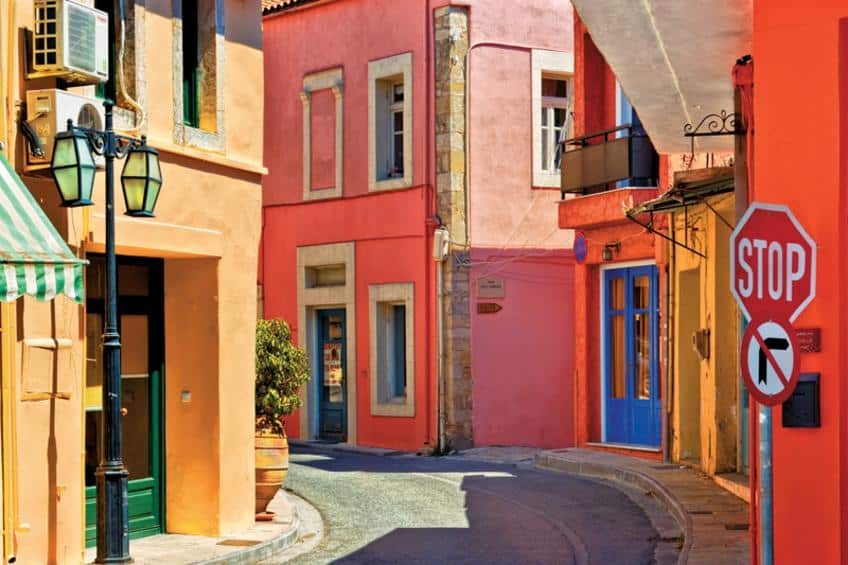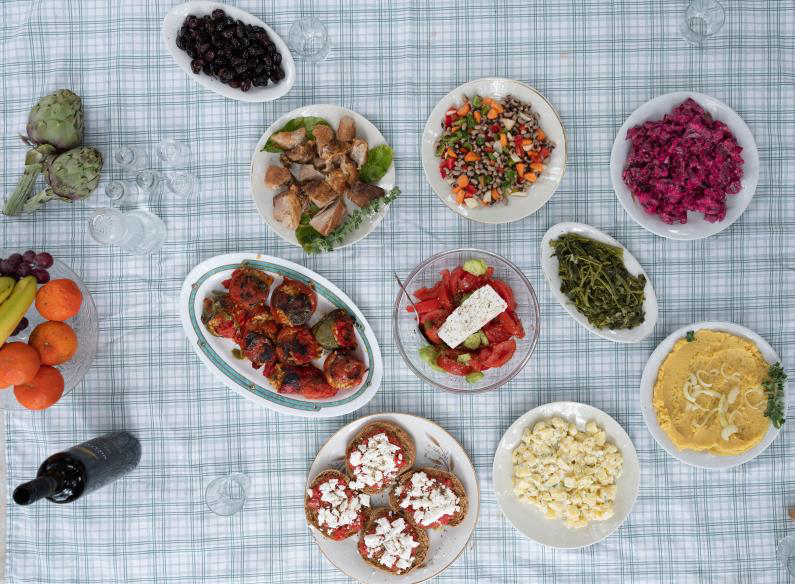GETTING TO KNOW HERAKLION

Interesting facts about Heraklion
- Heraklion itself, as we can see it today, was founded in 824.
- It is assumed that the ancient city of Knossos, which is located not far from the city centre, had its own port in the area of Heraklion approximately 4,000 years ago.
- The upper part of the Koules Fortress, located at the Venetian Harbour, is home to an open-air theatre, which puts on plays every single day.
- The Arolithos Village, situated near Heraklion, has preserved the island’s unique culture and traditions. Local artisans who live here make unique Cretan wares, and taverns offer traditional dishes.
- Arguably, the most unique ancient buildings can be found on the street that leads straight to the Venetian Harbour. Among these you’ll also see a Venetian loggia, built in the 17th century.
- If you want to bring something back for remembrance, consider looking for a piece of jewellery with an image of a bee. This is the symbol of Heraklion, as a similar piece was discovered during digs around the Palace of Knossos.
The city in a few words...
Heraklion or Iraklion is the largest city and the capital of Crete and capital of the Heraklion regional unit. It is the fifth largest city in Greece with a population of 140,730 according to the 2011 census.
The Bronze Age palace of Knossos, also known as the Palace of Minos, is located nearby. After the fall of the Minoans, Heraklion, as well as the rest of Crete in general, fared poorly, with very little development in the area. Only with the arrival of the Romans did some construction in the area begin, yet especially early into Byzantine times the area was abound with pirates and bandits.
Heraklion was Europe's fastest growing tourism destination for 2017, according to Euromonitor. It offers a wealth of museums, a summer-long arts festival, historical sightseeing, amazing nightlife and events throughout the year. Whatever the purpose of your visit, your stay in Heraklion will be one to remember.
What's worth a visit in Heraklion?
- Knossos
The center of Minoan civilisation and capital of Minoan Crete lay 5km south of Heraklion.
Knossos flourished for approximately two thousand years. It had large palace buildings, extensive workshop installations and luxurious rock-cut cave and tholos tombs. As a major centre of trade and the economy, Knossos maintained ties with the majority of cities in the Eastern Mediterranean. The numerous finds from the palace, all of exceptionally high quality art, pottery, vessels, figurines, the archive of Linear B tablets, and the original wall-paintings, are all housed in Heraklion's Archeological Museum.
- Heraklion Archeological Museum
The Heraklion Archaeological Museum is one of the largest and most important museums in Greece, and among the most important museums in Europe. It houses representative artefacts from all the periods of Cretan prehistory and history, covering a chronological span of over 5,500 years from the Neolithic period to Roman times. The museum, located in the town centre, was built between 1937 and 1940.
- The Market
Walk slowly through the Agora, the Market Street that runs alongside a shopping boulevard called 1866, after a Cretan uprising. From top to bottom, with some shaded sideways exits, this old Market Street is still a place for ‘Herakliotes' (locals) to come every day to find clothes, accessories, herbs, fish and fresh meat. It's a good place to find thyme honey, raki (the Cretan clear alcoholic beverage) from among shops selling everything from selections of Cretan music to the finest cheese. This market has a long history, always a place to meet and make plans. Walk the side-streets and you will smell good Cretan food and feel the buzz around you.
- Agios Minas Cathedral
You will find plenty of life around the wide space in front of the cathedral, dedicated to the Patron Saint of Heraklion and one of Greece's largest churches, completed in a cruciform shape with twin towers. The church suffered damage in the battles for the city and needed thirty years to be rebuilt. In 1896 it was inaugurated with lavish celebrations. The "plateia" also contains a wonderful collection of religious icon paintings, housed inside the strong walls of the much older church of Agios Minas, and the Basilica of Agia Ekaterini, built in 1555 and the site of a renowned school of Renaissance painters and writers in the 16th and 17th Centuries. Inside the church can be seen the work of Mikail Damaskinos among other representatives of the Cretan School. The square here takes its name from this church, rather than the great cathedral.

And around the city?
- Archanes village Archanes has won awards - 2nd best restored village in Europe and 1st in long term development prospects. Streets have been newly stone-paved, there are more splendid displays of blooming flowers, fruit trees and plants in the yards, terraces and balconies of the houses - a walk around the back streets is a pleasure as a result.
Archanes is so close to Heraklion in time and in distance, so much a pleasure too.
The large village (and a large agricultural centre as well) has little in the way of places to stay, but has been restored and beautified with European Union funds, as well as private initiative. A truly remarkable job has been done here, the place looks great but retains as much atmosphere and as many original features as possible. Don't miss a chance to dine in one of its typical greek tavernas!
- Zaros village
Zaros is a particularly attractive, refreshingly unspoilt village famous for its spring water, which is now bottled and sold all over Crete. Various excavations in the region indicate that the Minoans and the Romans settled here, lured by the abundant supply of fresh water.
The focal point of Zaros is the small lake that forms part of a wetland where a number of rare birds and other wildlife take refuge. Some cafes front the lake, which has become an ideal refuge for people as well, especially on hot summer evenings.
- Matala coastal village
Half the beach is fringed by tamarisk trees, leading the eye on to impressive formations of sandstone rock cliffs with their famous caves sliding into the sea at an odd angle, creating one of the most unusual beachscapes on the island.
Nobody knows quite who started caves but it seems likely that they were first hollowed out as Roman or early Christian tombs. Matala it is one of just over 400 beaches in Greece that have been awarded a Blue Flag. The village is centrally located on the south coast, and away from the over-development of the north coast, therefore it keeps most of its natural habitat unspoilt. In the 1960s, the caves were occupied by hippies, who were later driven out by the church and the military junta. The village's hippie history relives during the 3 days Matala Beach and Music Festival (since 2011).
- Agiofaraggo gorge
If you like natural landscapes, this small beautiful gorge of approximately 1 hour is just right! Along the route in the gorge, vertical cliffs with caves rise, but the course in the flat bed of the stream is very easy and smooth. Just before reaching the sea, there is a climbing field and it is very common to see some climbers.
Going down the canyon before reaching the cave Goumenospilios, one meets the church of Saint Anthony, which became the center of the asceticism of the area, when the hermits started forming a religious community. The church of Saint Anthony is believed to have been renovated three times to get its current form. First it was a small church in a small cave in the rock, but as the years passed and the number of hermits increased, a larger church was needed and it was extended. The last renovation took place in the 14th or 15th century.

What to eat in Crete
The Cretan Diet is famous and some say miraculous! It is the original Mediterranean diet -tasty and nutritious, ensuring good health and long life! This type of nutrition has helped create a combination of foods and lifestyle which provides a unique diet that is highly beneficial, it prolongs life and helps preventing many of the modern diseases that shorten the lives of millions of people every year in the West.
The Cretan Diet is both simple and wholesome.
It features plenty of fruit and vegetables, beans and grains in abundance, olive oil as the principal fat, moderate drinking of wine and raki, herbal teas like Greek Mountain Tea (which is said to be a "cure for everything") or Dittany of Crete (said to be an aphrodisiac)! Also, in includes honey and yoghurt, occasional use of lean red meat and low to moderate consumption of dairy foods, fish and poultry.
Come and sample these flavours on our various gourmet tours:
- Private Wine tasting in “Dionysus Cellar” at Archanes Village
- Into The Cretan Vineyard | Heraklion Wine Roads
Click here and prepare your notes: These are the foods you MUST try as a visitor in Crete!

